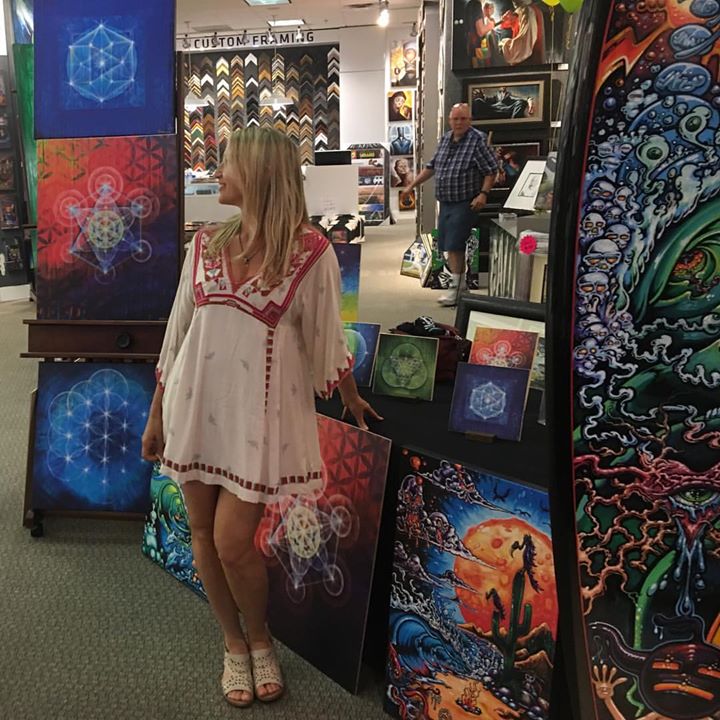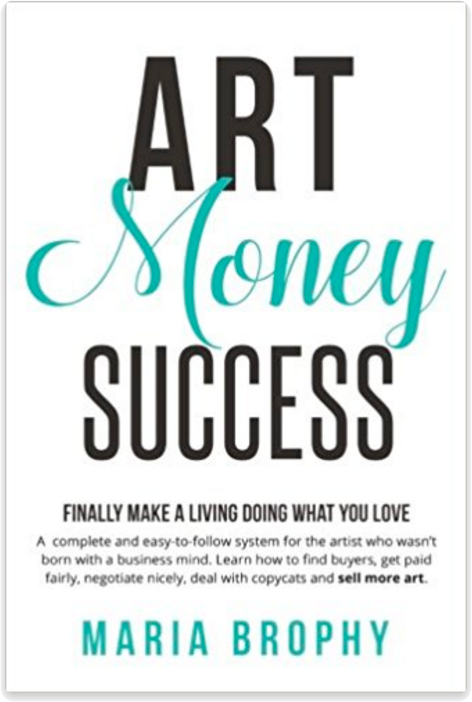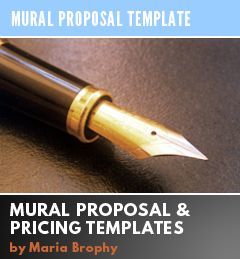
“When it comes to art, money is an unimportant detail. It just happens to be a huge unimportant detail.” Iggy Pop
When I wrote Art, Money & Success, I wanted to answer the most common questions I hear from artists, and one is “how much should I charge?”
So I included sections that tell how much money we charge for paintings and illustrations and how much $$$ we have been able to get up front from a licensing deal.
After the book went to print, I felt serious writer’s remorse. First of all, I hadn’t gotten my husband’s permission to tell ALL. I suddenly was afraid that he would be really, really mad at me. (I’ll tell that story another day.)
And secondly, I was worried that the dollar amounts wouldn’t translate to many people.
Some would read it and think “wow, they aren’t charging enough” and others would read it and think “there’s no way they charge that much!”
What I think is a lot of money, is not much at all to someone else. Some would look at the income Drew and I have earned and scoff at how little it is. And others would say “wow, you guys are killing it.” It’s all relative.
Einstein said that time is relative, and it goes fast or slow, depending upon what you are doing as the time passes.
I have found that MONEY IS RELATIVE, and your feelings about actual dollar amounts depend upon your background, where you live and how you were raised.
For some, charging $500 for a wall mural is just fine. For others, that amount is ridiculously low. It’s all relative to what feels normal to you.
Money Relativity is great for your art business if you were raised by parents who have a healthy money consciousness, or if you developed it on your own. A healthy relationship to money means you are not afraid of asking for money or of running out of money. Instead, you expect to have a thriving, cash-flow rich business. And with that expectation, the money comes to you.
Money Relativity makes the art business difficult for those who do not have a prosperity consciousness.
If you worry about money, are afraid to ask for it, fear charging too much or too little, and think that there is scarcity in the world, these feelings will manifest into actions which manifest into lack of money in your pocket.
You will earn less, due to your fears. And your fears will become reality.
The $500 Artist Vs. the $15,000 Artist
How is it that one artist will charge $500 for a wall mural, while another would charge $15,000 for the same wall mural? I have seen this disparity many times.
The art may be just as good from one artist to another, but the $500 artist is afraid to ask for more. She feels like it’s not worth more. She thinks her client can’t pay more. Or the client is a friend, so she feels obligated to give freely. She’s always only ever charged a small amount, to barely get by, and so the low fee feels normal to her. She’s accepted the “starving artist” paradigm as truth. She often says things like “I can’t afford to do that” and “No one has the money to pay me.” Her words become her truth.
The $15,000 artist is accustomed to being paid fairly for her work. She knows its worth and she puts out better quality than the $500 artist, because the money she’s being paid enables her to use the best materials and hire an assistant. She expects that her clients can pay her prices, and she knows that many people out there have the money to properly pay her. She seeks out clients that can afford her prices, and her clients are happy with her and refer her out to their friends, who also can afford to pay her prices.
The amount of money you charge is relative to your own personal beliefs surrounding money and prosperity. The money you are earning has nothing to do with what people can afford to pay.
The world has more money in it today than ever before. What you believe you can get, you most likely will. Regardless of what you believe, be it $500 or $15,000.
What do you think? Have you struggled with your prosperity mindset? If you have thoughts on this, please share in the comments!











7 Responses
Another great, timely article, Maria and right on the money (pun intended).
Although it’s common and accepted to charge “what the market will bear”, or in other words, “get as much as you can”, in truth it’s all a question of perception on the part of the seller and the potential buyer.
Many artists undervalue their work, others over-value it, and the same is true of potential licensees who perhaps have not licensed much work before and don’t know what’s standard, or who are bound by the rules of their company and thus might pay far less than others who produce the same sort of product.
Recently I advised an illustrator friend to ask for much more on a particular job because her work is good and I thought her client would accept that fee. I told her she could always accept a lower fee if the client felt it was too high. As it happened, she got the higher fee, no problem.
I also advised another friend who paints in oil on canvas to price his paintings higher than he had been because I felt he wasn’t charging what the market would bear. For whatever reason, he didn’t feel comfortable listing his paintings for more, and demurred.
A lot of it is attitude, plain yet not so simple. It’s as you say, what may a lot in one person’s estimation can be a pittance in another’s. It’s always something of a guessing game and often involves negotiation.
Artists should keep in mind two others factors as well. First, the price placed on art communicates the perceived value of the work. Price it high, it’s apparently worth a lot. Price it low, and buyers may pass it by based on the perception that it isn’t worth much. Second, remember that in a price negotiation, while you can always go down in price, you can’t go up.
Thanks for sharing your thoughts on this, Lance. I especially liked what you wrote: “can always go down in price, you can’t go up.” So true!
Great article as always. I find this one tricky ive worked alot on my money mindsets… about a year ago i decided to shift my price of my art up.. and decided it was worth it! i added on the prices of commissions as if it was in a gallery and stated this was the price.
I put works in exhibitions, shows & on my website at this price..I had a open studio at my house with over 50 artworks then after about 8 months of not really selling anything… i dropped the prices and had a “sale” to see if it was it.. still the same result…. so its not the price. which was a good experiment… . but now it gets to the point where i think well i would rather sell something rather than nothing. I know that’s not the right way to think about it .. but sometimes you just want some type of encouragement!!!
Great article! The Art profession goes to any art, murals, body painting, clowning etc. I’ve also found that how much you charge depends on the area you live in. If you live in a very conservative town, you will cons intently get lower prices than more progressive areas. When I first started, and 25 years ago I charged more than anyone in my area to the point of ridiculous. I made my money and now I do those “500” dollar murals, so to speak instead of the 15000 dollar murals. The amount of money I believe is also relative to how young and hungry you are. I’m older and not as hungry. The Young and Hungry…..go make that money, pay yourself, pay your bills, and save the rest!
The union of art and commerce – A tricky business
The minute I start thinking about whether or not something I’m working on will sell, some indefinable cosmic connection is broken. This is true even for commissioned work. Its as if placing monetary value while into the thick of ones creative juices sucks the the nutritious soul food out. Ironically, I’ve done work based on this topic. That’s different. Thematically using art and commerce as creative playground is not the same as doing something while hoping it will sell. I have to wait until a work is done before considering it’s worth in hard cold cash. I don’t believe money is the root of all evil. But I do believe it has the ability to suck your soul (or whatever you want to call it) from you.
The psychology around how to price things is fascinating. People actually respect you and your art more if you ask for higher prices. Or they may think you’re just a clueless dilettante. I still struggle with pricing my own work. But as time marches on I seem to get better at it – In other words, asking for more money. But then that seems a natural course of things as with age one is more practiced in their art and wiser in their dealings.
Anyhow all this diatribe just to get to the point that I enjoyed your article. I also enjoyed the comments here too. It’s a topic that rolls about in my noggin quite a bit.
Thanks!
Great post! I feel like when I first started out selling my art I didn’t realize that there are buyers who do have very large budgets for art and design in their homes.
In the beginning I didn’t know my customer. Over the years I began to communicate with my buyers and found they had vacation homes and lots of interest in putting my art in them.
So, I learned to price my art through my knowledge of my actual customers and their needs. It made happy to know that they expected to pay well for my work.
Great article, Maria! I agree that the perceived value of art is completely subjective and that an artist will charge what they perceive they are worth.
I make a good living as a professional mural artist in the San Francisco Bay Area. However, to get to where I am today but it took 15 years of work painting, learning how to run a small business, and educating myself about my relationship to money in order to make my career as an artist a success. In fact, sometimes a entire paradigm shift around one’s perception of oneself and one’s relationship to money is necessary before you are able to allow yourself to charge enough to make a good living. Of course, having plenty of work coming in is a big help too.
I highly recommend T. Harv Eker’s “Secrets of the Millionaire Mind” to learn how to create a healthy relationship to money and to allow yourself to accept financial success into your life.
Keep up with the wonderful articles. I love the important work you do to help artists become successful.
Cheers,
Morgan Bricca
Morgan Mural Studios
https://www.morganmurals.com